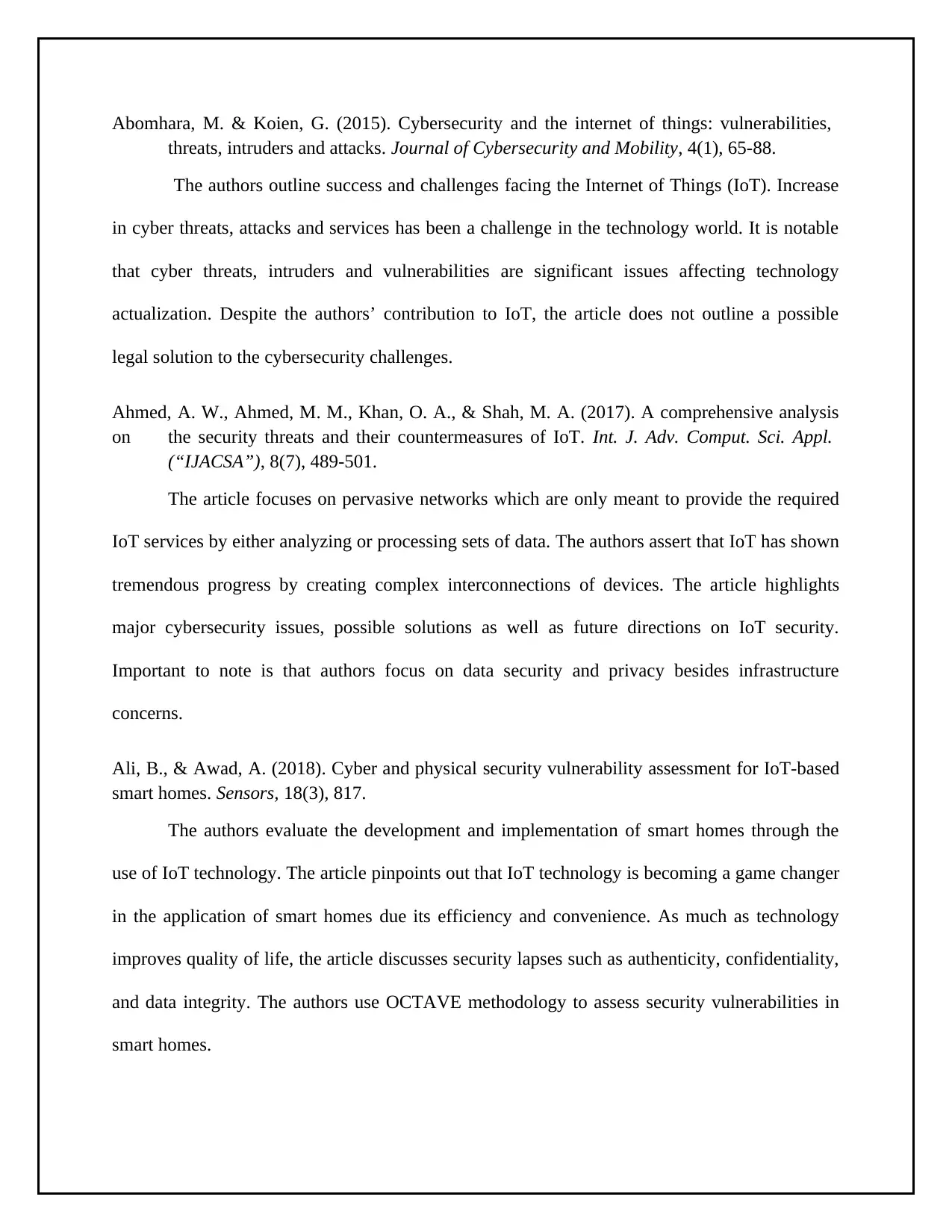Report: Emerging Threats and Countermeasures in IoT Security
VerifiedAdded on 2023/01/11
|4
|866
|38
Report
AI Summary
This report provides an analysis of emerging threats and countermeasures in the context of Internet of Things (IoT) security. It examines various research papers and articles that address cybersecurity challenges, vulnerabilities, and potential solutions within the IoT landscape. The report highlights key issues such as the increasing number of cyber threats, data privacy concerns, and the need for robust security measures in smart homes and other IoT applications. It discusses the limitations of current approaches, including the lack of legal solutions and the focus on technological measures over physical device security. The report also explores the impact of new IoT features on security and privacy, emphasizing the need for comprehensive strategies to address evolving threats. The analysis covers a range of perspectives, from the challenges faced by Australia in adopting technology to the importance of assessing security vulnerabilities using methodologies like OCTAVE. The report aims to provide a comprehensive overview of the current state of IoT security and offers insights into the ongoing efforts to develop effective countermeasures.
1 out of 4











![[object Object]](/_next/static/media/star-bottom.7253800d.svg)